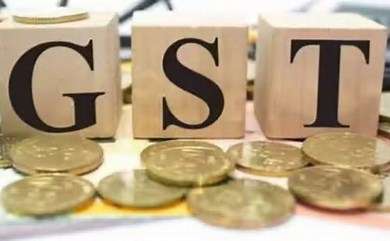Chandigarh, May 17, 2025 — Punjab’s financial health is under renewed scrutiny after the state’s finance secretary raised concerns over a significant drop in revenue collections from the Goods and Services Tax (GST) and excise duties. This revenue shortfall poses fresh challenges for the state’s already strained fiscal framework, with experts urging immediate corrective measure.
In a detailed presentation to the state cabinet earlier this week, Finance Secretary Ajoy Sharma revealed that GST collections for the first quarter of the financial year 2025-26 have declined by nearly 11% compared to the same period last year. Excise revenue, a key source of non-tax income for the state, has also dropped by approximately 9%.
According to Sharma, the contraction in GST revenue is largely attributable to reduced industrial activity, weakening consumption trends, and compliance-related issues. “A slowdown in manufacturing and construction, coupled with lower retail spending, is affecting the state’s GST inflows,” he noted.
Punjab, which is heavily dependent on GST and excise to fund its welfare schemes and infrastructure projects, is now facing potential budgetary imbalances. The fall in excise revenue—primarily generated through liquor and fuel sales—is being linked to increased smuggling and leakage, particularly along border districts. The finance department has flagged the need for enhanced enforcement and digital tracking mechanisms.
Key stakeholders in the state government have acknowledged the urgency of the situation. Chief Minister Bhagwant Mann has reportedly directed officials to initiate a comprehensive review of tax administration practices and explore policy-level interventions to widen the tax base. The finance department is also pushing for better coordination with central agencies to ensure timely compensation of pending GST dues.
The shortfall comes at a time when Punjab is already grappling with high debt levels. According to the Reserve Bank of India’s latest State Finances Report, Punjab’s debt-to-GSDP ratio stands at an alarming 47%, one of the highest among Indian states. Experts caution that sustained revenue dips could push the state toward unsustainable borrowing.
Dr. Ranjit Kaur, an economist at Punjab University, commented, “While the Centre’s GST compensation regime provided a buffer during the pandemic, its phased withdrawal has exposed structural inefficiencies in states like Punjab. Addressing revenue leakage and modernizing tax compliance are critical steps now.”
Meanwhile, industry representatives have voiced concerns that increased enforcement could lead to overregulation. “Instead of knee-jerk crackdowns, the state should focus on ease of doing business and incentivizing formalization,” said Manpreet Grewal, President of the Punjab Chamber of Commerce.
Conclusion:
With the state’s fiscal stability at stake, Punjab’s government is under mounting pressure to reverse the downward trend in GST and excise collections. A coordinated effort involving administrative reforms, economic stimulus, and stricter enforcement may be the key to restoring revenue growth and preserving essential public services. The coming months will be crucial in determining whether Punjab can stabilize its finances or slide further into a revenue crisis.



